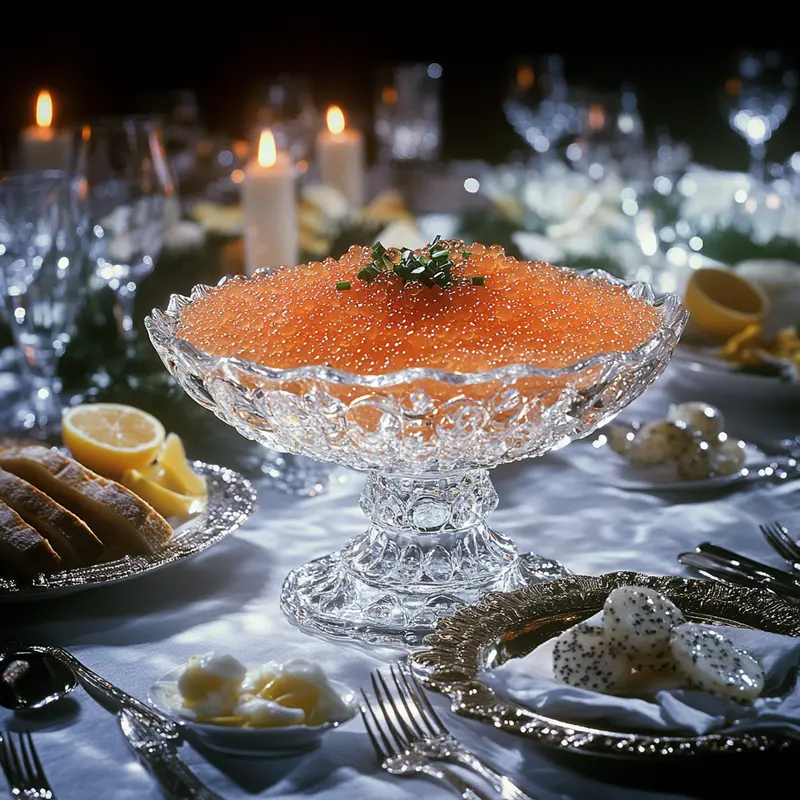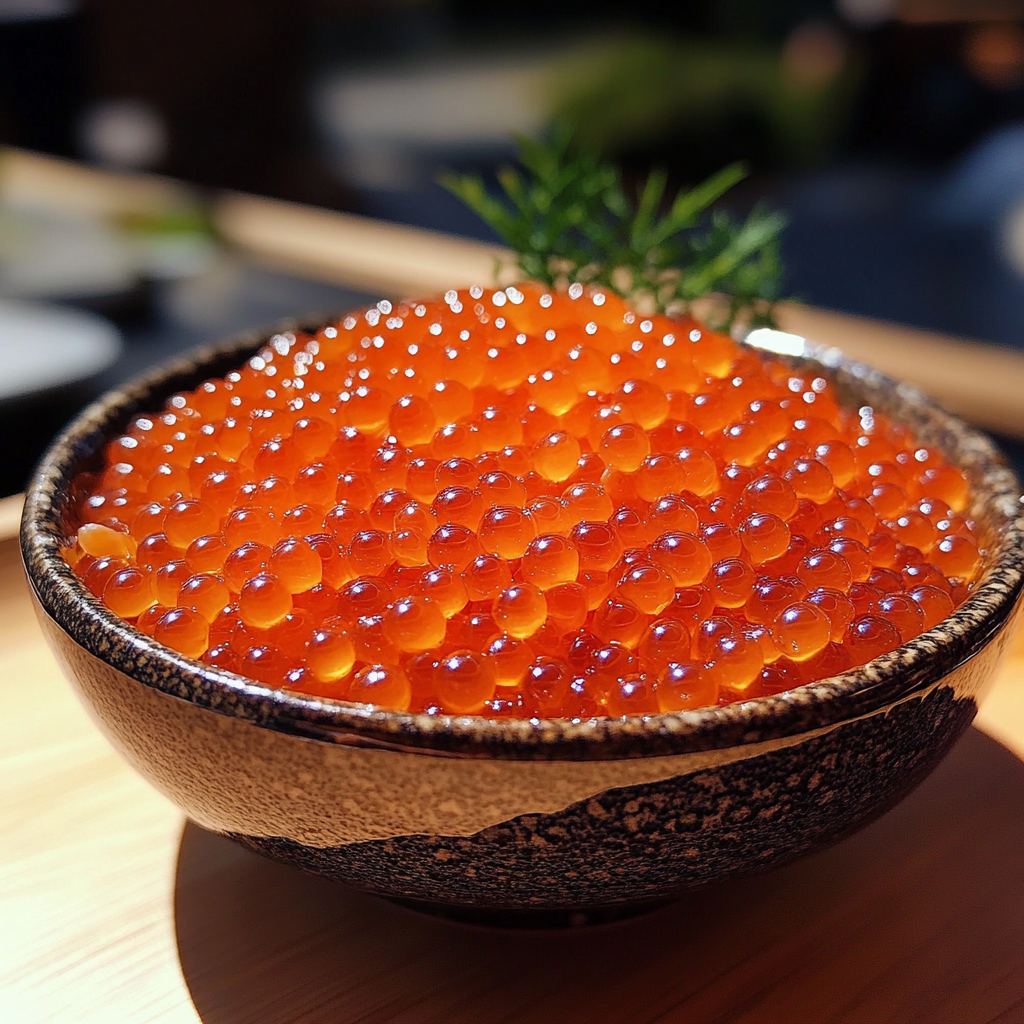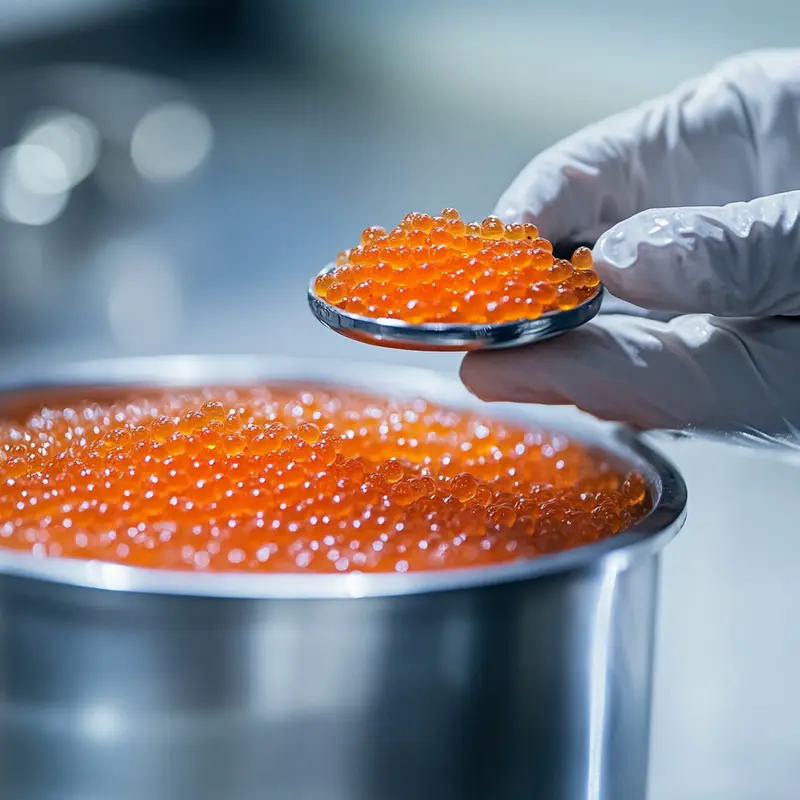Salmon roe, a delicacy cherished by food enthusiasts around the globe, is more than just a vibrant addition to your plate. Rich in nutrients and flavor, it has been an essential part of cultural cuisines, health discussions, and even sustainability talks. This article dives deep into the world of salmon roe, exploring its origins, types, benefits, culinary uses, and much more. Let’s crack open the fascinating details, starting with its history and significance.
Introduction to Salmon Roe
Understanding
Salmon roe, also known as fish eggs or “ikura” in Japanese cuisine, is a culinary treasure admired for its distinct flavor and texture. These tiny, glistening orange pearls are not just a treat for the taste buds—they’re also packed with nutrients like omega-3 fatty acids, making them a fantastic superfood. Whether you’re a fan of sushi, traditional dishes, or curious about its health benefits, salmon roe deserves a spot in your kitchen.
What is Salmon Roe?
Salmon roe refers to the eggs of female salmon, harvested delicately during specific seasons. These bright orange eggs are admired for their firm, slightly salty exterior that bursts into a rich, oceanic flavor when eaten.
The appeal of salmon roe isn’t just in its taste—it’s also a nutritional powerhouse. Laden with protein, essential fats, and antioxidants, it supports heart health, brain function, and overall well-being. In culinary terms, salmon roe can be enjoyed raw, cured, or as a topping on various dishes like sushi and salads. The texture, flavor, and versatility make it a standout ingredient in global cuisines.
Historical Significance of Salmon Roe
The history of “Salmon R” is deeply tied to ancient fishing traditions. Indigenous communities, particularly in the northern hemisphere, have valued salmon eggs for centuries as both food and medicine. In Japan, “ikura” has been a staple in traditional cuisine, often served with rice or as a delicacy at special occasions.
In Russia, “Salmon R” is synonymous with festivity, gracing tables during celebrations and used as a symbol of abundance. Additionally, this delicacy has been prized for its rich nutrients, serving as a vital source of energy and sustenance in harsh climates. Over time, “Salmon R” transitioned from being a regional food to a globally celebrated gourmet ingredient.
Types of Salmon Roe
Salmon roe varies significantly depending on the species of salmon. Each type boasts unique characteristics in size, flavor, and texture, which make them distinct yet equally appealing.
Chum Salmon Roe
Chum salmon roe is one of the largest varieties of roe, with a striking bright orange hue. It has a mild, buttery taste, making it a popular choice for sushi and garnishes. Chum roe’s slightly softer texture appeals to those who prefer a gentle burst of flavor.
Coho Salmon Roe
Coho salmon roe is smaller and darker in color, with a bolder and saltier taste profile. This variety is highly sought after for its robust flavor, often featured in more adventurous recipes. Coho roe pairs exceptionally well with savory dishes and creamy textures, adding a burst of umami to the palate.
Sockeye Salmon Roe
Sockeye salmon roe stands out for its vibrant red hue and firm texture. This roe delivers a rich, briny flavor with a hint of sweetness, making it a favorite among connoisseurs. Its versatility allows it to shine in both traditional and modern culinary creations.
Salmon roe’s diverse types provide endless possibilities in the kitchen, catering to varied tastes and preferences while showcasing its nutritional excellence.
Nutritional Profile and Health Benefits
Nutritional Composition of Salmon Roe
Salmon roe is not only a culinary delicacy but also a nutritional powerhouse. These vibrant orange pearls pack a punch when it comes to macronutrients, vitamins, and minerals, making them a smart addition to any diet.
Macronutrients
A serving of “Salmon R” is rich in high-quality protein, which is essential for muscle repair and overall health. It also contains healthy fats, particularly omega-3 fatty acids, which are renowned for their role in reducing inflammation and supporting heart health. While roe is naturally low in carbohydrates, it provides a satisfying source of energy and nourishment due to its fat and protein content.
Vitamins and Minerals
Salmon roe is a treasure trove of essential vitamins and minerals. It’s particularly rich in vitamin D, which aids in calcium absorption and supports bone health. Additionally, it contains vitamin B12, crucial for energy production and red blood cell formation. Minerals such as selenium and phosphorus are abundant, helping to protect cells from oxidative damage and maintaining healthy teeth and bones. With these nutrients, salmon roe proves to be much more than just a flavorful addition to your plate.
Health Benefits of Salmon Roe
The health benefits of salmon roe go far beyond its impressive nutrient profile. From heart health to brain function, this superfood delivers a range of advantages that cater to diverse health needs.
Omega-3 Fatty Acids and Heart Health
One of the standout features of salmon roe is its omega-3 fatty acid content, including EPA and DHA. These healthy fats are vital for maintaining cardiovascular health. They help lower triglyceride levels, reduce blood pressure, and prevent the buildup of plaque in arteries. Incorporating salmon roe into your diet may significantly decrease the risk of heart disease, making it a heart-smart choice.
Antioxidant Properties
Salmon roe contains antioxidants like selenium and astaxanthin, which play a crucial role in protecting the body against free radicals. These antioxidants help reduce oxidative stress, which is linked to chronic diseases and aging. Regular consumption of antioxidant-rich foods, such as salmon roe, can support overall cellular health and longevity.
Role in Brain Function
Thanks to its omega-3 fatty acids and vitamin B12, salmon roe is also a brain booster. These nutrients are essential for maintaining cognitive function, improving memory, and supporting neurological health. Pregnant women may particularly benefit, as DHA is critical for fetal brain development. Whether you’re aiming to enhance mental clarity or protect against age-related cognitive decline, salmon roe is a natural ally for brain health.
By offering a blend of essential nutrients and proven health benefits, salmon roe stands out as a functional food that supports your body in multiple ways.
Culinary Uses and Preparation
Culinary Applications of Salmon Roe
Salmon roe is as versatile as it is delicious, lending its vibrant color and unique flavor to both traditional and modern dishes. Its slightly briny taste and popping texture make it a prized ingredient across global cuisines.
Traditional Dishes Featuring Salmon Roe
In Japanese cuisine, “Salmon R”, known as ikura, is a staple in sushi and sashimi dishes. It is often served atop vinegared rice in gunkan maki or layered with other fresh ingredients in rice bowls called donburi. Similarly, Russian cuisine features “Salmon R” as a key element in festive meals, often served with buttered bread or blini. These traditional dishes celebrate the natural flavor of roe, enhancing it with simple yet complementary ingredients.
Modern Recipes Incorporating Salmon Roe
Beyond its traditional uses, “Salmon R” has found its way into contemporary culinary creations. Chefs and home cooks alike use it as a garnish for creamy pasta, avocado toast, and even deviled eggs. Its bold flavor pairs well with neutral or lightly seasoned bases, providing a pop of umami and visual appeal. Salmon roe also works wonderfully in salads and can elevate appetizers like crackers topped with cream cheese or smoked salmon.
How to Prepare and Serve Salmon Roe
Proper preparation and serving of salmon roe are essential to enjoy its best flavor and texture.
Selecting Quality Salmon Roe
When choosing salmon roe, freshness is paramount. Look for eggs that are firm, translucent, and brightly colored—these qualities indicate freshness and high quality. Avoid roe that appears dull, overly soft, or has an off-putting smell. If possible, source your roe from trusted suppliers or certified sustainable fisheries to ensure its quality and ethical harvesting.

Storage Guidelines
Salmon roe is highly perishable and should be handled with care. Store it in the coldest part of your refrigerator, ideally at temperatures between 32°F and 38°F. Keep it in an airtight container to prevent it from absorbing other odors. For extended storage, freezing is an option, but be mindful that this may slightly alter its texture.
Serving Suggestions
Serving salmon roe can be as simple or as elaborate as you like. For an elegant touch, serve it as a topping on crackers with a dollop of crème fraîche or as a garnish for soups and seafood dishes. Pair it with mild, creamy textures to balance its brininess, or use it as a dramatic finish to elevate a dish’s presentation. Whether you’re hosting a dinner party or enjoying a quiet meal, salmon roe adds a luxurious flair to any plate.
From traditional classics to innovative modern recipes, salmon roe’s versatility ensures it can shine in a variety of culinary contexts.
Cultural Significance and Sustainability
Cultural Importance of Salmon Roe
Salmon roe holds a cherished place in the culinary traditions of many cultures, particularly in Japan and Russia. These regions have long celebrated salmon roe not only as a delicacy but also as a symbol of abundance, prosperity, and life.
Salmon Roe in Japanese Cuisine
In Japan, salmon roe, known as ikura, is deeply embedded in the nation’s culinary heritage. It is a prominent ingredient in traditional dishes such as sushi, rice bowls (ikura don), and onigiri (rice balls). The vibrant orange eggs are often marinated in a soy sauce mixture to enhance their flavor, creating a perfect balance of saltiness and umami. Beyond its taste, ikura is visually stunning, often used to add a pop of color and luxury to dishes.
Salmon Roe in Russian Cuisine
In Russian culture, salmon roe is synonymous with celebration. Known as “red caviar,” it is a staple during festive occasions and is frequently served as an appetizer. Russians enjoy it with buttered bread, blini (thin pancakes), or as a garnish for salads. Salmon roe also symbolizes wealth and prosperity, making it a sought-after treat for special gatherings.
Sustainability and Ethical Considerations
As the demand for salmon roe grows, so does the need to address sustainability and ethical harvesting practices. Responsible choices are vital to preserve fish populations and the ecosystems they inhabit.
Sustainable Harvesting Practices
Sustainable harvesting of salmon roe involves careful management of fishing practices to ensure salmon populations remain healthy. This includes observing quotas, avoiding overfishing, and protecting spawning grounds. Certified fisheries, such as those recognized by the Marine Stewardship Council, adhere to these principles, providing consumers with responsibly sourced salmon roe.
Environmental Impact
The production of salmon roe can have environmental implications, particularly if unsustainable practices are employed. Overfishing not only threatens salmon populations but also disrupts the food chain and marine biodiversity. Additionally, the use of unsustainable aquaculture methods can contribute to habitat degradation. By supporting fisheries that prioritize sustainability and reduce environmental impact, consumers can help protect the delicate balance of ocean ecosystems.
Incorporating sustainably sourced “Salmon R” into your diet not only ensures its continued availability but also supports responsible practices that benefit the environment and future generations.
Frequently Asked Questions (FAQs)
FAQs about Salmon Roe
What is the difference between salmon roe and caviar?
While both “Salmon R” and caviar are types of fish eggs, they differ in species and preparation. Caviar traditionally refers to the processed eggs of sturgeon, often salt-cured and prized for its luxurious appeal. This delicacy comes from salmon and has larger, more vibrant orange eggs. It is typically less expensive and offers a brinier, more pronounced flavor. While both are delicacies, it is more commonly used in everyday dishes due to its affordability and availability.
Is it safe to consume salmon roe during pregnancy?
Yes, in most cases, “Salmon R” is safe for pregnant women when consumed in moderation and from reputable sources. Its high levels of omega-3 fatty acids and nutrients like vitamin D can benefit fetal development. However, ensure that the roe is properly stored and prepared to avoid any risk of contamination. If you have concerns, consult your healthcare provider to determine whether it’s suitable for your diet.
How should salmon roe be stored?
Proper storage is key to preserving the freshness of salmon roe. Keep it refrigerated in an airtight container to prevent exposure to air and odors. The optimal temperature is between 32°F and 38°F. If you don’t plan to consume it within a few days, freezing is an option. However, freezing may slightly alter the texture of the eggs. Always thaw frozen roe in the refrigerator for the best results.
What are the best pairings for salmon roe?
Salmon roe pairs beautifully with a wide range of flavors. It shines when served with neutral, creamy bases such as cream cheese, sour cream, or avocado. For a traditional touch, try it with buttered toast, blini, or sushi rice. It also complements lightly seasoned pasta, scrambled eggs, or seafood dishes. The key is to balance its bold flavor with mild and complementary ingredients.

Are there any dietary restrictions associated with salmon roe?
Individuals with fish or seafood allergies should avoid “Salmon R”. Additionally, due to its sodium content, those on low-sodium diets should consume it sparingly. It’s always a good idea to check the ingredient label, as some salmon roe products may include added salt or preservatives.
Where can I purchase high-quality salmon roe?
You can purchase high-quality “Salmon R” at specialty grocery stores, seafood markets, or online retailers. Look for suppliers who emphasize sustainability and freshness, such as those certified by the Marine Stewardship Council. Avoid products with dull, mushy eggs or a strong off-putting odor, as these are signs of poor quality. Opting for reputable sources ensures you’re getting the best flavor and nutritional value.
By addressing these common questions, you can better appreciate and enjoy “Salmon R” while making informed choices about its selection and preparation.

